 by our College Data Analytics Team
by our College Data Analytics TeamConcordia College - New York total enrollment is approximately 1,129 students. 645 are undergraduates and 254 are graduate students.
Male/Female Breakdown of Undergraduates
The full-time Concordia College - New York undergraduate population is made up of 72% women, and 28% men.
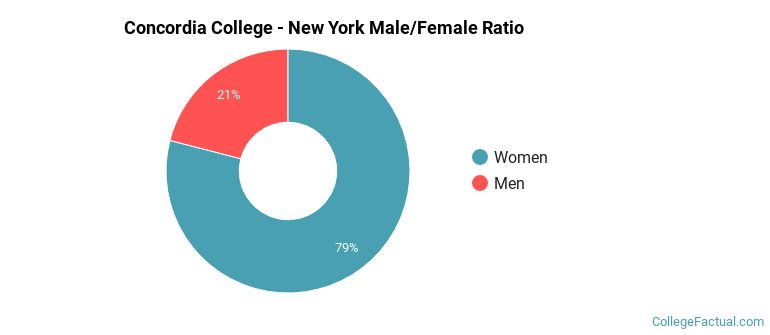
For the gender breakdown for all students, go here.
Concordia College - New York Racial/Ethnic Breakdown of Undergraduates
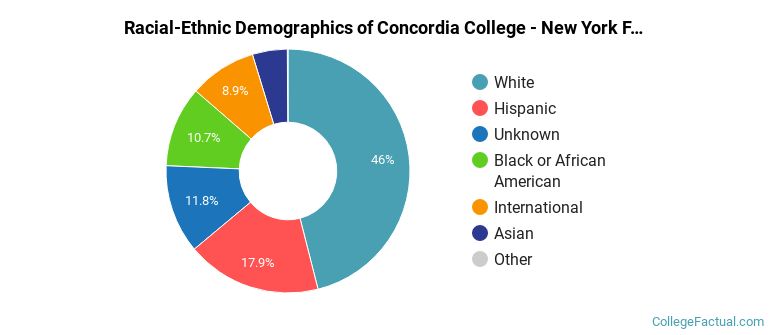
| Race/Ethnicity | Number |
|---|---|
| White | 249 |
| Hispanic | 161 |
| Black or African American | 93 |
| International | 50 |
| Unknown | 50 |
| Asian | 38 |
| Native Hawaiian or Pacific Islander | 1 |
| Multi-Ethnic | 0 |
See racial/ethnic breakdown for all students.
Male/Female Breakdown of Graduate Students
About 76% of full-time grad students are women, and 24% men.
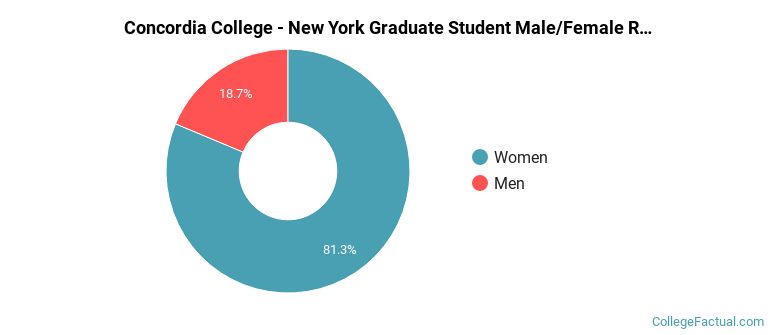
For the gender breakdown for all students, go here.
Concordia College - New York Racial-Ethnic Breakdown of Graduate Students
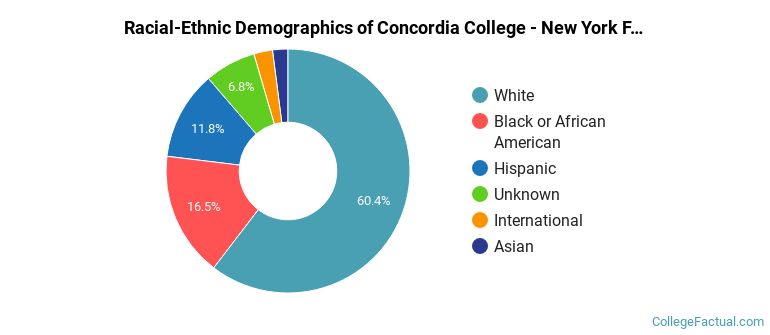
| Race/Ethnicity | Number |
|---|---|
| Unknown | 97 |
| White | 67 |
| Black or African American | 42 |
| Hispanic | 39 |
| Asian | 8 |
| Native Hawaiian or Pacific Islander | 0 |
| International | 0 |
| Multi-Ethnic | 0 |
See racial/ethnic breakdown for all students.
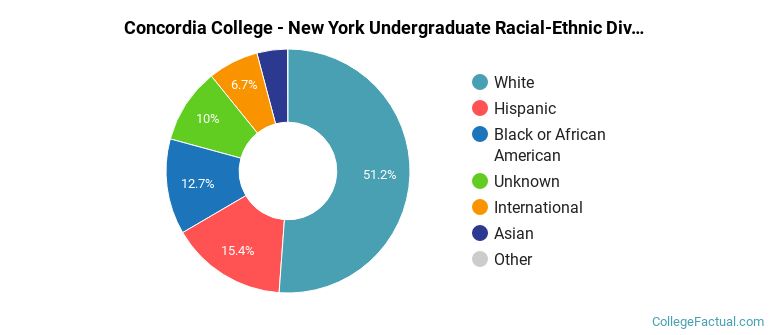
| Race/Ethnicity | Number |
|---|---|
| White | 434 |
| Hispanic | 231 |
| Unknown | 191 |
| Black or African American | 160 |
| Asian | 58 |
| International | 50 |
| Native Hawaiian or Pacific Islander | 1 |
| Multi-Ethnic | 0 |
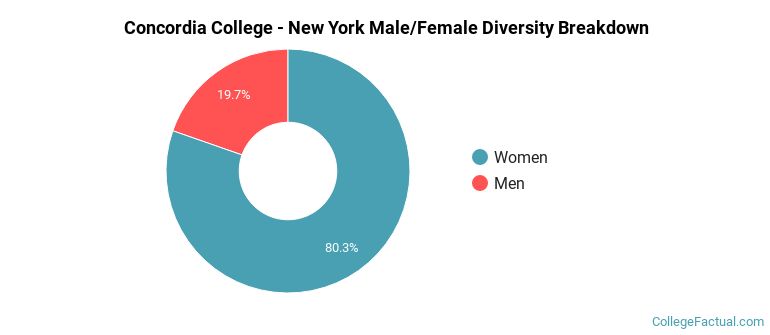
There are approximately 857 female students and 272 male students at Concordia College - New York.
Concordia College - New York ranks 868 out of 2,183 when it comes to geographic diversity.
22.64% of Concordia College - New York students come from out of state, and 22.14% come from out of the country.
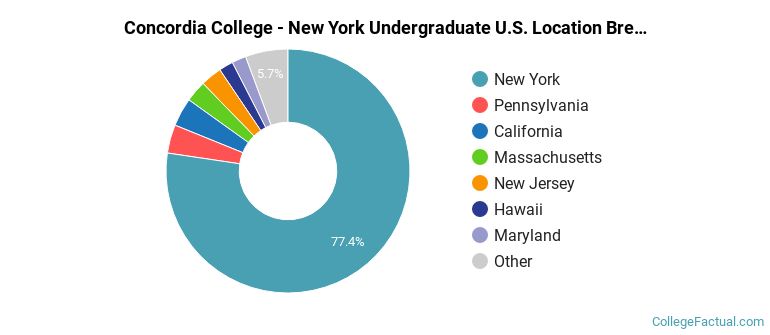
The undergraduate student body is split among 13 states (may include Washington D.C.). Click on the map for more detail.
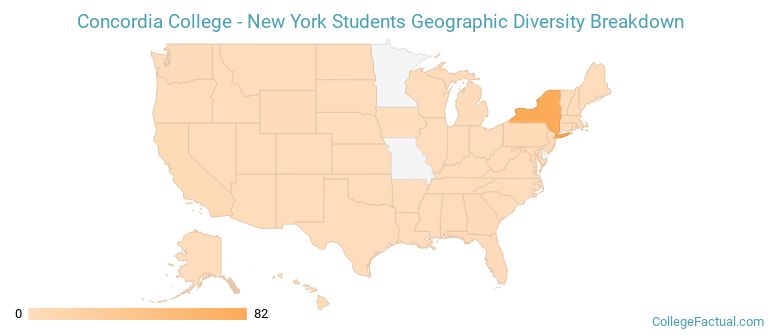
| State | Amount |
|---|---|
| New York | 82 |
| California | 4 |
| Pennsylvania | 4 |
| Massachusetts | 3 |
| New Jersey | 3 |
Students from 34 countries are represented at this school, with the majority of the international students coming from China, Nepal, and Nigeria.
Learn more about international students at Concordia College - New York.
A traditional college student is defined as being between the ages of 18-21. At Concordia College - New York, 41.64% of students fall into that category, compared to the national average of 60%.
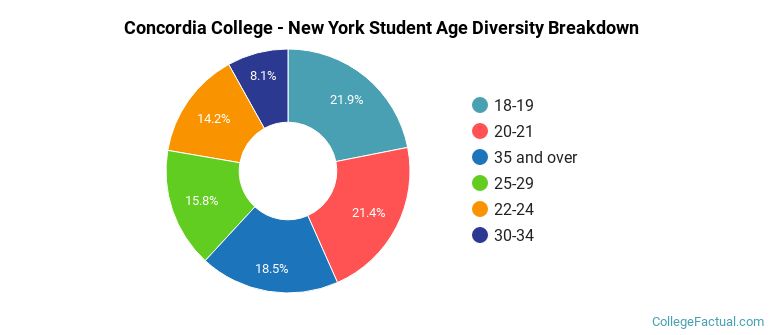
| Student Age Group | Amount |
|---|---|
| 18-19 | 336 |
| 20-21 | 329 |
| 35 and over | 284 |
| 25-29 | 243 |
| 22-24 | 218 |
| 30-34 | 124 |
| Under 18 | 0 |
Footnotes
*The racial-ethnic minorities count is calculated by taking the total number of students and subtracting white students, international students, and students whose race/ethnicity was unknown. This number is then divided by the total number of students at the school to obtain the racial-ethnic minorities percentage.
References
Department of Homeland Security Citizenship and Immigration Services
Image Credit: By Concordia College under License